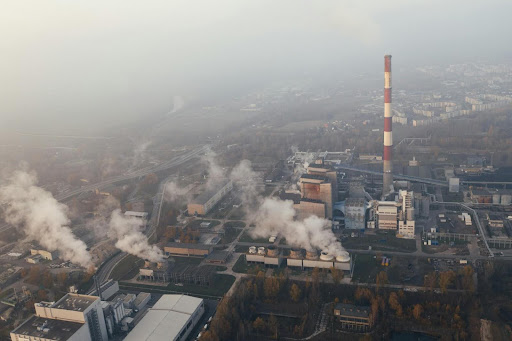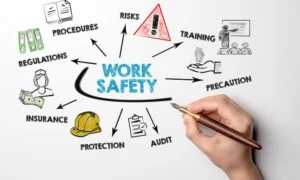Chemical storage is an often-overlooked aspect of workplace safety, yet it plays a critical role in protecting employees, property, and the environment. Improper storage can lead to hazardous spills, fires, health issues, or even catastrophic industrial accidents. Whether you’re running a manufacturing facility, laboratory, or warehouse, having strong chemical storage protocols isn’t optional; it’s a legal and ethical necessity.
Safety begins with simple, practical improvements that can make a dramatic difference. By integrating better chemical storage practices, companies can reduce risk, improve regulatory compliance, and foster a safer, more responsible workplace culture.
Conduct A Comprehensive Inventory And Hazard Assessment
Improving chemical storage begins with understanding what you’re storing. Start by creating a detailed inventory of all chemicals on-site, including their quantities, hazard classifications, expiration dates, and storage requirements. This helps identify incompatible substances, expired or unstable materials, and unnecessary redundancies.
Once the inventory is complete, conduct a hazard assessment using Safety Data Sheets (SDS). These documents provide crucial information such as flashpoints, reactivity, toxicity, and safe handling instructions. Understanding each chemical’s properties enables better storage decisions and highlights where new safety measures are needed.
Employers should revisit these assessments regularly, particularly after introducing new chemicals or changing processes.
Use The Right Storage Containers For Each Chemical
Not all containers are created equal. Storing chemicals in incorrect or compromised vessels is a leading cause of workplace accidents. Containers must be compatible with the chemical’s properties to prevent degradation, leakage, or dangerous reactions.
Acids should not be stored in metal containers, while flammable liquids require specialized flame-resistant containers. For highly reactive or sensitive substances, secondary containment or double-walled tanks may be necessary. Clear labeling is important, including hazard symbols and emergency information. You can click here to learn more about chemical storage tank solutions tailored to your exact needs. Durable, chemical-resistant storage tanks designed specifically for industrial use provide the safest solution for many facilities.
Separate Incompatible Chemicals
Certain chemicals should never be stored near each other due to the risk of violent reactions. A classic example is storing acids near bases or oxidizers near flammable solvents, scenarios that can result in fires, explosions, or toxic gas emissions.
Implementing physical segregation by hazard class is a simple yet vital step. Use color-coded storage areas or cabinets for acids, flammables, corrosives, and oxidizers. Maintain safe distances, and in some cases, use barriers or containment trays to reduce the spread of spills.
Automated inventory systems can help monitor storage locations and provide alerts if incompatible substances are placed too close.
Optimize Ventilation And Environmental Controls
Chemical fumes can accumulate quickly in confined or poorly ventilated spaces, posing respiratory hazards and increasing the risk of fire. Ventilation systems, whether general HVAC or localized exhaust, are critical in maintaining safe air quality.
For particularly volatile or toxic chemicals, storage should take place in ventilated cabinets or rooms with negative pressure and air filtration systems. Temperature and humidity control is important. Some chemicals degrade or become unstable under extreme environmental conditions.
Installing environmental monitoring sensors helps detect dangerous changes and trigger alerts before conditions reach unsafe levels. Smart ventilation and control systems can even adjust airflow automatically in response to chemical presence.
Train Employees On Proper Handling And Emergency Response
Even the best storage systems can’t compensate for poorly trained personnel. Workers must know how to handle chemicals safely, recognize hazards, and respond effectively to emergencies like spills or exposure.
Training should include:
- Reading and interpreting SDS documents
- Using personal protective equipment (PPE) correctly
- Following proper transfer, labeling, and storage protocols
- Implementing spill response procedures
Hands-on drills and refreshers ensure skills remain sharp. In workplaces with a high turnover or rotating staff, training must be ongoing and tailored to job roles. Empowering employees with this knowledge not only reduces risks but fosters a culture of safety and accountability.
Establish And Maintain A Routine Inspection Schedule
Consistent inspections are key to catching small issues before they escalate. Storage areas should be reviewed weekly for signs of wear, leaks, labeling issues, or improper arrangements. Tanks and containers should be checked for corrosion, cracks, and expiration of integrity testing dates.
Spill kits, eyewash stations, and fire suppression systems must be inspected to confirm readiness. Maintaining a checklist ensures that no aspect is overlooked, while digital tools can streamline recordkeeping and reporting.
Creating accountability through designated inspection roles helps ensure follow-through. And when issues are discovered, prompt corrective action minimizes risk and maintains compliance with occupational safety standards.

Chemical storage might not be the most glamorous aspect of facility management, but it’s one of the most important. Implementing smarter storage strategies, starting with inventory assessments and proper containers, and expanding into environmental controls, employee training, and inspections, creates a safer and more efficient workplace. For businesses that handle chemicals regularly, partnering with experts and exploring dedicated containment solutions can elevate safety and simplify compliance. Proactive storage isn’t just good practice, it’s the frontline defense against preventable disasters.



































